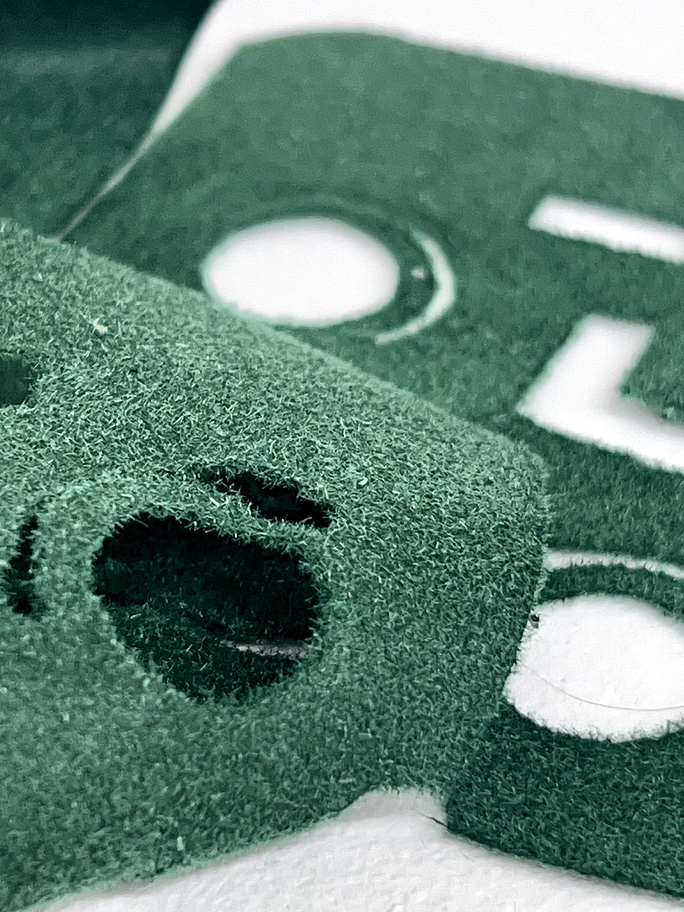Decorative: Any of those arts that are concerned with the design and decoration of objects that are chiefly prized for their utility, rather than for their purely aesthetic qualities.
Examples: spray paint, pigments, graphite ink, glitter, flocking
Reflective: Surfaces that involve reflective materials or finishes.
Examples: Mirrors, polished metals, or reflective coatings.
Illusory: Treatments that create optical illusions or deceive the eye.
Examples: reflective surfaces that alter perception of depth, moire
Color: Color surface treatments involve the application or integration of colors into the surface of a sculpture to achieve various visual and emotional effects. These treatments can be purely aesthetic, symbolic, or functional, depending on the intention behind their use.
Examples: Paint, pigment, dyes, enamels
Symbolic: Treatments imbued with symbolic meanings or cultural significance.
Examples: Use of specific colors, patterns, or motifs that convey cultural or symbolic messages.
Documentary: A surface treatment intended to record, preserve, or document information, visual data, or physical changes over time, often for historical, artistic, or research purposes.
Examples: fur, cyanotype
Descriptive: records the likeness of a place or person or other subjects
Examples: narrative painting, reliefs
Tactile: Surfaces designed to evoke a specific tactile response or sensory interaction.
Examples: fur, flocking
Textural: Focus on the texture created by the surface treatment, both visually and physically.
Examples: embossing, engraving, instant paper mache, popcorn ceiling texture
Experimental: Innovative and unconventional surface treatments that explore new materials and methods.
Examples: Using unconventional materials like recycled plastics, biodegradable substances, or experimental composites.
Degradable:“the process in which the beauty or quality of something is destroyed or spoiled”
Examples: dirt, latex
Environmental: Surfaces that interact with environmental conditions or change over time.
Examples: Rusting metal, weathering wood, emulsion, or photochromic paints.
Impermanent: Not lasting long.
Examples: latex, marking spray paint, wax, photo emulsion
Protective: Keep safe from harm or injury.
Examples: waterproofing, silicone, spray enamel, flocking, urethane rubber
Structural: Relating to or forming part of the structure of a building or other item.
Examples: resin, spray foam, cement, plaster
Technological: Incorporation of modern technology into the surface treatment.
Examples: LED surfaces, projection mapping, or smart materials.














